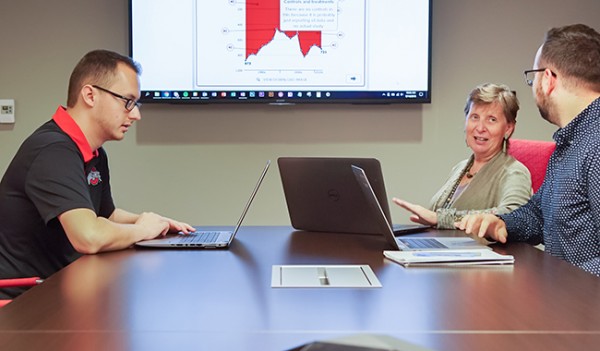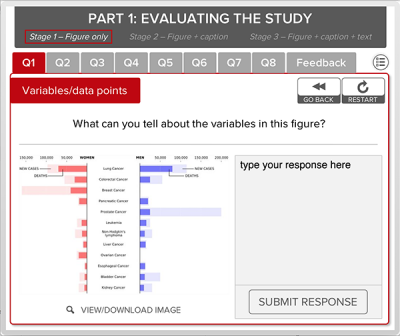Better Together: Creating a Highly Engaging Online Class

When Kimerly Powell, faculty in The Ohio State University’s College of Medicine, was tapped to design and lead an online course in biomedical informatics, she enlisted the help of Marjorie Kelley, a consultant with online teaching and course design experience.
The two collaborated with staff from The Office of Distance Education and eLearning (ODEE), leveraging their own experience and the latest in online education standards. Together, they created an online course that engaged students in ways they’d never before envisioned.
Kelley said she was surprised when students sent her detailed emails and scheduled one-on-one conversations with her, some several times over the course of the semester. She just wasn’t used to that level of engagement from distance students.
“I had always noticed that (student engagement) was the number one problem with distance education,” Kelley said. “I didn’t have the skill set or the educational chops when it comes to that. I knew there was a problem.”
ODEE Associate Instructional Designer Steven Nagel and Associate Educational Technologist Ross Tamburro worked closely with Powell and Kelley to construct the course Design and Methodological Approaches in Biomedical Informatics, which teaches students about research study design and proposal writing.
“They need to know how to formulate a relevant research question that has not been studied and develop a plan to do that,” Powell said.
“Steven and his colleagues set a standard for us to achieve, and I think if we didn’t have that, it would have been much more difficult for us to design an effective online course.”
Kimerly Powell, Clinical Assistant Professor, Department of Biomedical Informatics
With that learning outcome in mind, Nagel met with the instructors for several hours weekly during the course development process as they hashed out how to best engage the students. The three worked with Tamburro and other ODEE staff to create the course content – including video lectures and interviews and interactive graphs and figures.
Nagel’s expertise on the latest developments in technology and pedagogy was essential. “It’s difficult for instructors to be content experts in our area as well as domain experts in the pedagogy of adult education, much less the whole domain of distance education,” Kelley said. “To be successful in all three domains, you can’t do it alone. You need a team.”

The interactive tool or “multimedia learning object” the group designed showed students sample graphs and figures and guided them in critiquing those figures as they received audio and text feedback from the instructors. “Once students went through the module, they could really see the benefit of it and understand what they were learning,” Powell said.
Not only did Powell and Kelley report that the learning object was successful, it was a unique way to teach the material and engage students in learning. Nagel and Tamburro will be presenting about it at an online learning conference this fall, and Nagel has designed his own research study to gather data on its efficacy as a learning aid.
Access to ODEE talent wasn’t the only benefit of the collaboration. Along the way, the components of the course were measured against best practices in distance education in categories such as accessibility, instructor presence and metacognition. Having that benchmark as a guide was critical for Powell and Kelley as they evaluated whether they thought their students would achieve the course’s learning outcomes. “Steven and his colleagues set a standard for us to achieve, and I think if we didn’t have that, it would have been much more difficult for us to design an effective online course,” Powell said.
Kelley said that if she’d tried to design the course on her own, she would have spent 20 to 30 hours a week for six months and would have ended with a course only half as good. “It’s a team effort, and the end product is ten times better than any individual could ever produce,” she said.
“I think ODEE’s business is understanding how students learn online. That’s not our business,” Powell agreed. “Our business is research and education. Online teaching is a new domain that’s rapidly changing, and there aren’t enough hours in the day for researchers to explore valid and reliable instruments that help students learn online.”
Learn more about ODEE’s quality assurance standards for distance education courses and programs at Ohio State or schedule a consultation with a member of the distance education team.
